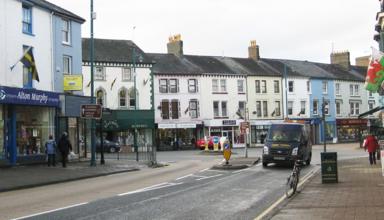The past year has been an eventful one for local government in Wales. There have been headlines about reforming public services, reorganising authorities, voluntary mergers, White Papers, commissions, prospectuses and Bills. This blogpost tries to summarise in one place what’s been going on, and provides links to the key documents. The main developments in the process so far can be set out as follows:
April 2013: The Welsh Government announces that it’s establishing a Commission on Public Service Governance and Delivery (the Williams Commission). For the first time, the First Minister publicly acknowledges that reorganisation of Welsh local government is a possibility. January 2014: The Williams Commission publishes its report, covering many facets of how public services are delivered. Amongst the 62 recommendations is the conclusion that some local authorities are too small to perform effectively. As such, the Commission suggests that the 22 Welsh local authorities should be merged to create either 10, 11 or 12 units. July 2014: The Welsh Government responds to the Williams Commission report with a series of initial proposals under the ‘Devolution, Democracy and Delivery’ banner. These include a general paper on Improving public services for people in Wales and a more specific White Paper on Local Government Reform. The White Paper states:
- That the Welsh Government’s preference is for 12 local authorities, in line with the first option recommended by the Williams Commission. This option would see Carmarthenshire, Powys and Swansea remaining as they are, and the following authorities merging: Anglesey and Gwynedd; Conwy and Denbighshire; Flintshire and Wrexham; Ceredigion and Pembrokeshire; Neath Port Talbot and Bridgend; Rhondda Cynon Taf and Merthyr Tydfil; Cardiff and the Vale of Glamorgan; Blaenau Gwent, Caerphilly and Torfaen; and Monmouthshire and Newport.
- As there was insufficient time to make all these changes before the next Assembly elections in May 2016, the Welsh Government would be issuing two separate Bills to enable mergers to take place.
- The first Bill would be introduced in January 2015 and would enable local authorities who wished to merge voluntarily to do so early. This Bill would also allow preparatory work to be undertaken for the full merger programme, which would take place through a second Bill.
- This second Bill would be published in draft form for consultation in the autumn of 2015, and would contain the main merger proposals. However, this Bill would not be introduced formally in the Assembly until after the May 2016 elections.
September 2014: The Welsh Government publishes an Invitation to Principal Authorities in Wales to submit proposals for voluntary merger. The Welsh Government calls this a ‘prospectus’ and invites local authorities that wish to merge voluntarily to submit expressions of interest by 28 November 2014. Three such expressions of interest are eventually made, by Denbighshire and Conwy; Blaenau Gwent and Torfaen; and Bridgend and the Vale of Glamorgan. October 2014: The Welsh Government publishes a White Paper on the Public Services Staff Commission. The Commission’s role will be to look at staffing issues associated with the merger process. November 2014: A report by the Chartered Institute of Public Finance and Accountancy (commissioned by the Welsh Local Government Association) suggests that the transition costs of merging local authorities could range between £160 million and £268 million. Annual savings of £65 million may be recouped after two to three years. December 2014: The Welsh Government publishes the responses to its initial July 2014 White Paper, including a summary document. 26 January 2015: The Welsh Government introduces the Local Government (Wales) Bill (i.e. the first Bill). The Bill will enable local authorities who have submitted successful bids to merge voluntarily, by way of regulations. The BIll will also facilitate preparatory work for further mergers, once the new local authority areas have been set out in a second Bill. 27 January 2015: The Minister for Public Services (Leighton Andrews AM) announces that he has decided to reject all three expressions of interest for voluntary merger on the grounds that they did not meet the criteria set out in the prospectus issued in September 2014. 27 January 2015: Both the Minister for Public Services and the First Minister tell the Assembly’s Plenary meeting that the Welsh Government’s preferred option for merger is still the 12-authority approach set out in the Williams Commission report. But the First Minister also concedes that this is not ‘definitive’. As such, he invites leaders of the other political parties to have discussions with him on the eventual local government map. 3 February 2015: The Welsh Government publishes a further White Paper on Local Government Reform: Power to Local People. This contains the Welsh Government’s proposals for making other changes – beyond merely mergers – to local government in Wales. It includes steps to try and reduce the cost of local government; improving the diversity of councillors; improving performance; and giving communities a bigger say in how local services are delivered. 5 February 2015: The Assembly’s Communities, Equality and Local Government Committee begins work scrutinising the first Local Government (Wales) Bill. The Minister for Public Services confirms that the Welsh Government will publish its map for the new local government areas before the summer recess, regardless of whether it has secured political consensus by then. Further blogposts will follow in due course, looking in more detail at the merger programme and the Welsh Government’s wider proposals for local government reform.
Article by Rhys Iorwerth, National Assembly for Wales Research Service.




